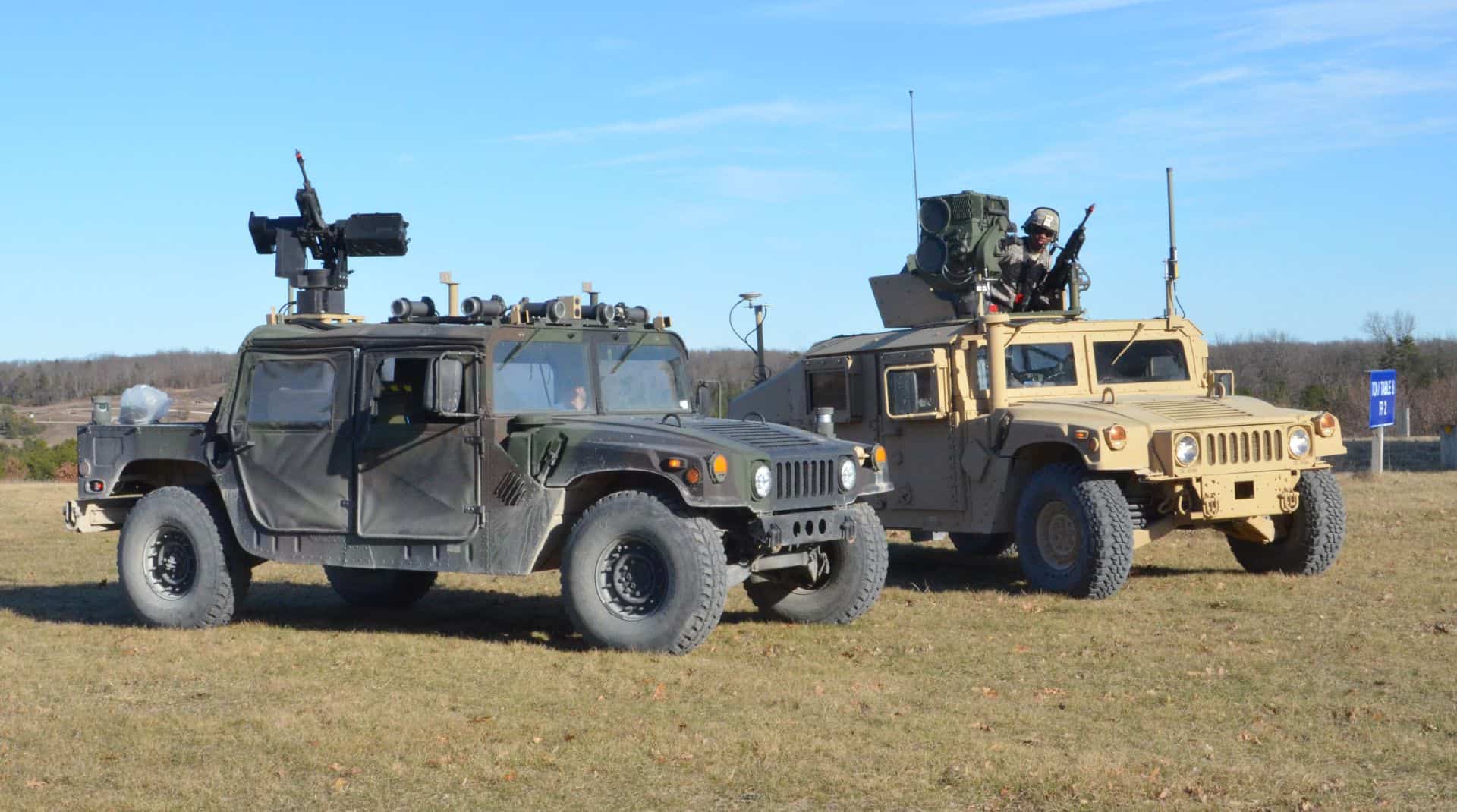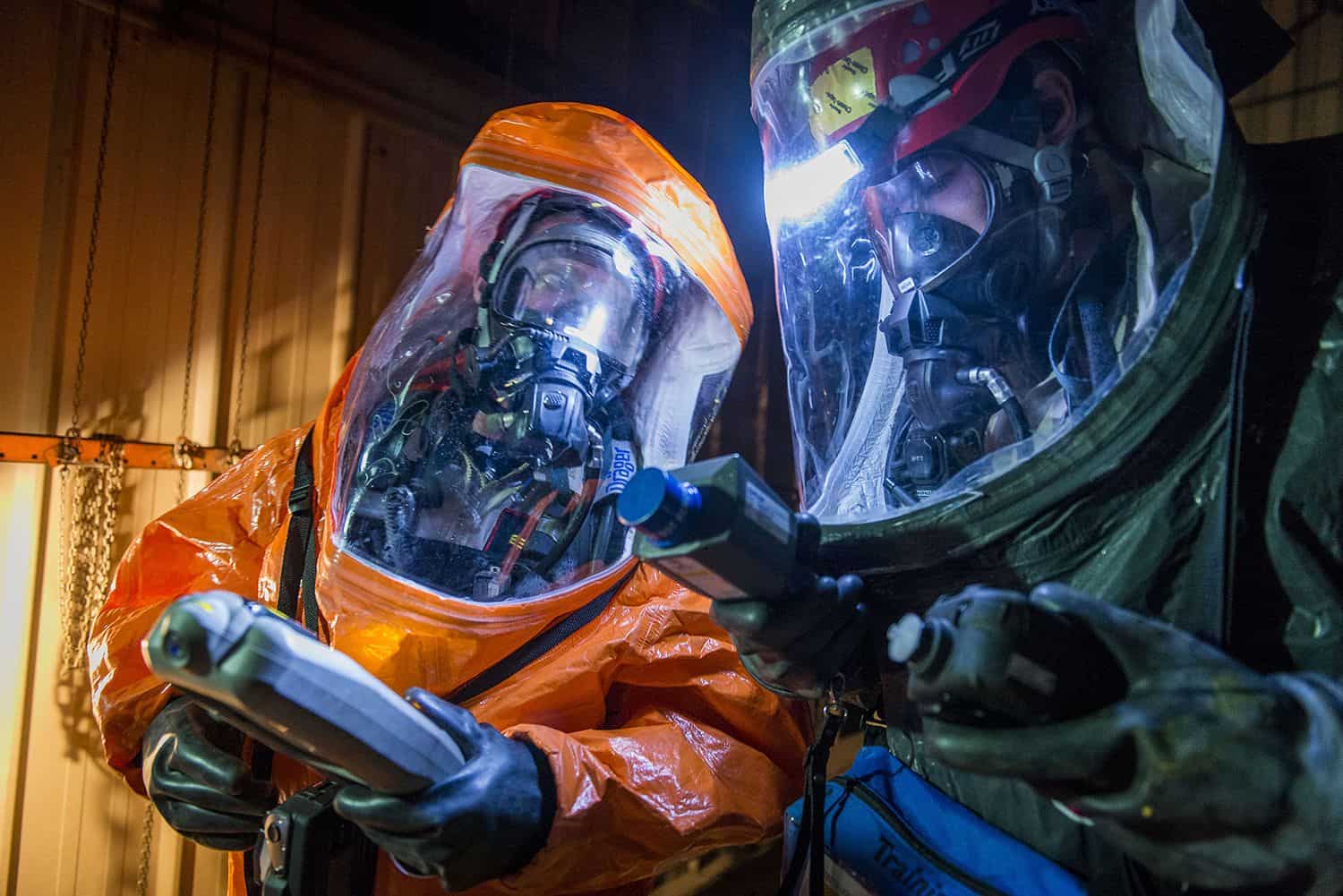Army engineers aim to qualify an autonomous combat vehicle on a gunnery range in the coming months, as part of a new program they say is the first step toward weaponized robotics.
Under the “Wingman” Joint Capability Technology Demonstration, or JCTD, program, engineers have already been able to autonomously pilot a specially-configured Humvee and hit targets with its on-board 7.62 mm weapon system.
The goal is to refine the Army Tank Automotive Research, Development and Engineering Center, or TARDEC, program so one day Soldiers can team up with robotic vehicles that will allow for increased stand-off between themselves and enemy forces.
Even with such systems, Army engineers say it will be Soldiers, not computers, that decide when to pull the trigger.
“You’re not going to have these systems go out there like in ‘The Terminator’ [film],” said Thomas B. Udvare, deputy chief of the program. “For the foreseeable future, you will always have a Soldier in the loop.”
The three-year $20 million JCTD officially started last year, he said, after initial testing in previous years. The Army Armaments Research, Development and Engineering Center, or ARDEC, and the Naval Surface Warfare Center Dahlgren Division are also partners in the program.
The program plans to soon undergo numerous upgrades in the mobility and lethality subsystems on the vehicles. One of the more significant upgrades will be to the weapon system with the addition of ARDEC’s Advanced Remote Armament System to solve an issue with its previous weapon, the M240B machine gun. While the ARAS system remains the same caliber, it is an electrically-driven gun that does not jam like the gas-driven machine gun.
“Obviously if you’re a kilometer away from your vehicle, jams are not good,” Udvare said. “What’s nice about their electrically-driven system is that the incidents of jamming are greatly reduced.”
In May, engineers are slated to take the two-vehicle set, which also includes a command and control Humvee manned by five personnel, to Grayling, Michigan, or Fort Benning, Georgia, to become certified in daytime operations on a Scout Gunnery Table VI course. The course is the same one used to train and qualify ground combat vehicle crews before they advance to larger warfighting exercises.
Military members could get their first chance to use the cutting-edge equipment in October, when engineers hope to conduct an operational user assessment at Fort Benning using Soldiers and Marines.
“We saw the Table VI as an opportunity,” Udvare said. “The course may not test all of our capabilities and may not show all of our flaws, but at least it’s a beginning point to start to assess these platforms and drive technology.”
NEW PLATFORMS
Mobility features for the current platform are controlled by the Robotic Technology Kernel, a TARDEC-developed autonomy system with driving cameras, sensors and other electronics that allow it be driven manually through teleoperation or autonomously through waypoint navigation, he said.
The Autonomous Remote Engagement System is another subsystem that reduces the time to identify targets using vision-based automatic target detection and user-specified target selection.
There are plans to expand the Wingman program to M113 armored personnel carriers and to boost its lethality with a .50 caliber machine gun and a CROWS system — Common Remotely Operated Weapon Station — to improve its on-the-move target acquisition.
What’s learned in the Wingman project will directly feed into one of TARDEC’s newest programs, called COVER, which stands for Combat Vehicle Robotics. That program will look at larger combat vehicles for manned-unmanned teaming.
The center will research all types of mobility platforms and lethality solutions to find what best suits the Army’s modernization needs, according to Paul Rogers, director of TARDEC.
“We’re definitely exploring all of the possibilities,” he said. “We’re optimizing the different options based on what we believe will have the greatest value for our operating force in the future.”
By 2035, advances in technology may allow a Soldier to manage multiple assets such as combat vehicles, unmanned aerial vehicles and reconnaissance vehicles at the same time in combat, Udvare said.
MANNED-UNMANNED TEAMING
In the near future, autonomous combat vehicles could be used in limited operations. Special Forces, for instance, may send one into a contested location instead of Soldiers, Udvare said.
Additional work is still needed in autonomous technology to refine its use for more complex operations, where the fog of war thickens.
“There a lot of issues with autonomy today, especially in unstructured environments,” Udvare said.
“Autonomous systems aren’t going to be smart enough to be on their own for decades,” he added. “How we make split decisions on what we process in our environment … is very complex.”
While these future vehicles could help the Army overcome possible force reductions, they are not designed to replace humans, the center’s director said.
“We believe that this is a disruptive capability that can go a long way to changing the warfighting calculus,” Rogers said. “To add autonomous platforms to the manned formations and have both the man and the machine work side-by-side to accomplish a mission is pretty powerful.”











